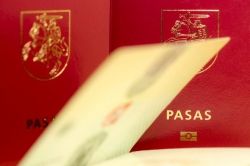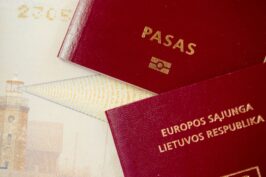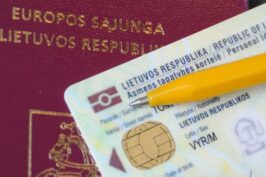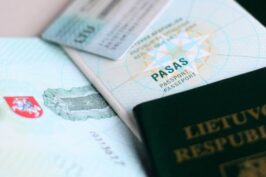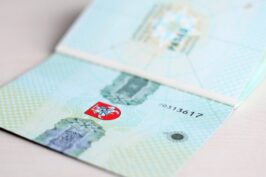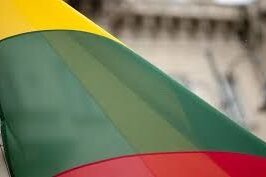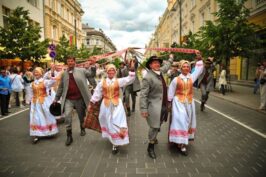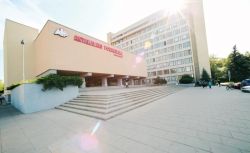- Home
- Lithuanian refugees. Dual citizenship to them and their descendants
Lithuanian refugees. Dual citizenship to them and their descendants
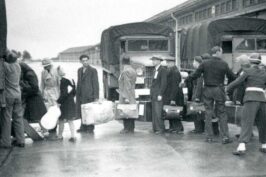
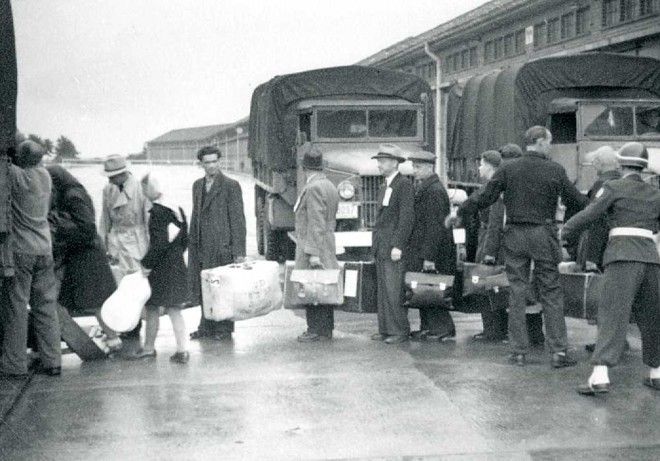
After the war between Germany and Soviet Union in 1941, Lithuania had to survive the exploitation of another occupier, atrocities and deportations, and massacres of Lithuanian citizens.
In the summer of 1944, at the approach of the German and Russian military front, Lithuanian residents massively departed to the West. It was a natural, unplanned, non-organized and unmanaged escape from home. It was thought that it would last if not days or weeks, then at least no longer than several months. These fugitives could not imagine that they would find themselves in the farthest countries of the world a few years later.
The following categories of emergence of Lithuanian residents in the West shall be distinguished:
1) Refugees who escaped due to the Soviet occupation of Lithuania on 15 June 1940. It is estimated that 1,000-2,000 people have left Lithuania.
2) Those who were moved to Germany according to the repatriation agreement concluded between Germany and the Soviet Russia on 10 January 1941. 50,141 persons departed during the period from 03 February 1941 to 25 March 1941, about 20,000 Lithuanians could be among the displaced.
3) Persons arrested under coercion and exiled during the German occupation:
a) Exiled under coercion by Germans to work in the Reich – 75,000. Their recruitment started in the middle of 1941, later on they were captured by all means. They have worked in industry and agriculture.
b) Coerted into German army or auxiliary military service – 50,000.
c) Coerted prisoners. A significant number of Lithuanian innocent victims in 1943-1944 was in prisons and concentration camps. About 10,000 Lithuanians, a total of about 30,000 Lithuanian citizens, were killed in concentration camps.
d) Evacuated to Germany, with German troops withdrawing from Lithuania, who were expelled to dig trenches, or servants escorting evacuated bodies from Lithuania.
4) Lithuanians who arrived in 1944, by saving their lives as the front and the second Soviet occupation approached.
It is estimated that about 100,000 Lithuanians were moving from their homeland at that time, but only a part of them has reached the West.
In total, more than 250,000 Lithuanians were more or less forced to leave their homeland during the war.
On 31 December 1946, 58,805 Lithuanians were patronized by UNRRA in Germany, about 6,500 Lithuanians were in other regions. Most of them consisted of refugees of 1944. There were also refugees from the Klaipėda region, that until 1939 was the territory of Lithuania. Part of those refugees should be considered Lithuanians, even though they had German citizenship and were not accepted to camps.
Under general census of Germany carried out in 1950, 49,000 people who came from the Klaipėda region were counted. Only 3 per cent of them have lived in camps and received UNRRA welfare. Thus, at least 10,000 of Lithuanians from the Small Lithuania should be added to 70,000 Lithuanians from the Great Lithuania.
Most of Lithuanians, who arrived to the West after war, settled themselves in camps of various sizes in Germany and Austria.
Provisions of the Lithuanian legislation shall entrench the right of persons who held Lithuanian citizenship until 15 June 1940 and departed from Lithuania until 11 March 1990, and the right of their descendants to restore Lithuanian citizenship upon preservation of the current citizenship (right into dual (multiple) citizenship).
A person willing to restore Lithuanian citizenship upon preservation of the current citizenship must prove the following main circumstances:
1. Lithuanian citizenship until 15 June 1940;
2. The fact of departure from Lithuania until 11 March 1990, or the fact of exile;
3. Family relationship;
4. Data change, if personal data was altered.
Documents confiming Lithuanian citizenship until 15 June 1940 are as follows:
1. Lithuanian internal or foreign passports issued until 15 June 1940;
2. Lithuanian foreign passports issued by the Lithuanian diplomatic missions or consular posts after 15 June 1940;
3. Documents certifying the person’s service in the Lithuanian Armed Forces or work in the civil service;
4. Birth certificates or other documents, wherein the held Lithuanian citizenship is directly indicated;
5. Personal certificates issued before 15 June 1940 in Lithuania, or personal certificates issued in accordance with documents that have been issued before 15 June 1940.
If the abovementioned documents are not available, the following documents can be submitted: documents about learning, work, life in Lithuania until 15 June 1940, as well as a foreign passport, and other documents.
An application for the restoration of Lithuanian citizenship shall be completed in Lithuanian. The documents enclosed thereto must be translated into Lithuanian and approved in accordance with the procedure established by legislation (Apostille or legalization procedure shall be applied).
Documents shall be submitted to the Migration Department or Lithuanian Embassy, or Consular Office abroad.
MIGRATION LAW CENTER
